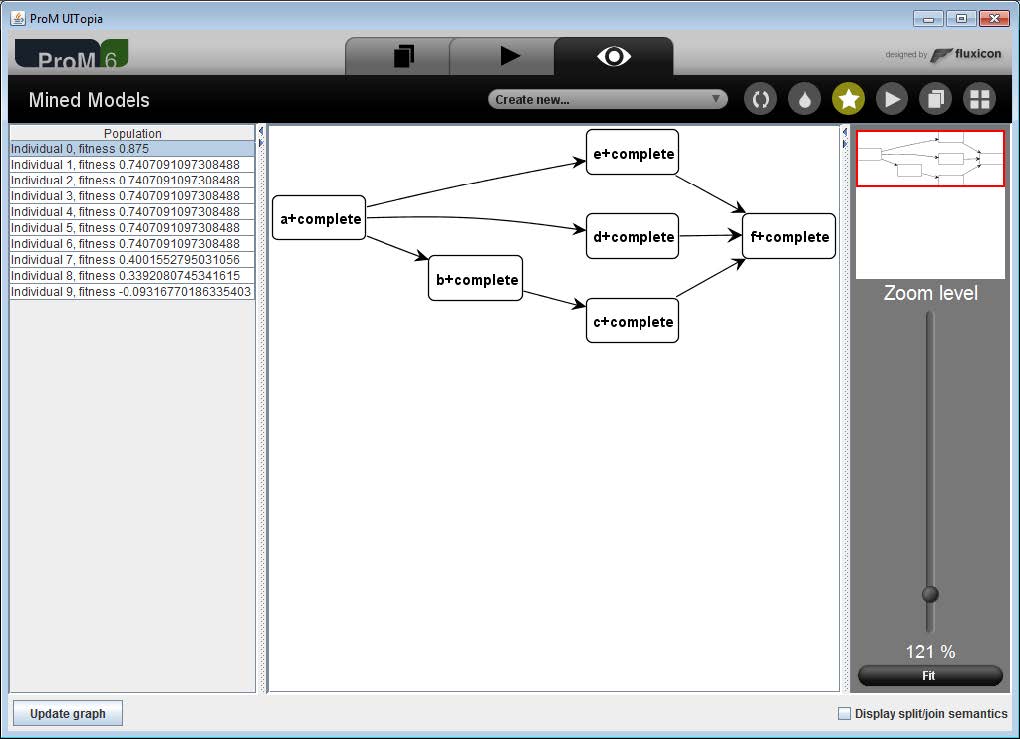For this exercise we will use the traces shown below which are stored in exercise4.xes.
1x Case1 a b c d f 1x Case2 a c b d f 1x Case3 a b d c f 1x Case4 a c d b f 1x Case5 a d e f 1x Case6 a e d f
- Since it is always a good idea to inspect the event log at hand, inspect exercise4.xes to get an idea of its contents. What is remarkable about this event log?
- Try to construct a Petri net by hand which can replay the traces recorded in exercise4.xes. Use 6 transitions that represent the actions A through F. Try to allow as little extra behavior as possible (e.g. no ‘flower’-nets).
- Now create three Petri nets using the following plug-ins:
- Compare the three Petri nets created by the different algorithms. Are there any fundamental differences or are they bisimilar? Why do you think that there is a difference between (some of) the Petri nets?
- Now run the Heuristics Miner on exercise4.xes. Is this a Petri net? What is different?
- Create a new visualization of the HeuristicsNet that shows the join and split semantics. Is this a similar net as the Petri nets from the previous steps?
- Now run the Genetic Miner on exercise4.xes. Why is the result with the default settings so poor? Try to improve the setting and get a result with a fitness of at least 0.8.
Solutions
- One of the most remarkable things is that all events have the same date and time.
- See the results of the Petri net discovery plug-ins performed for the next question in the figures below.
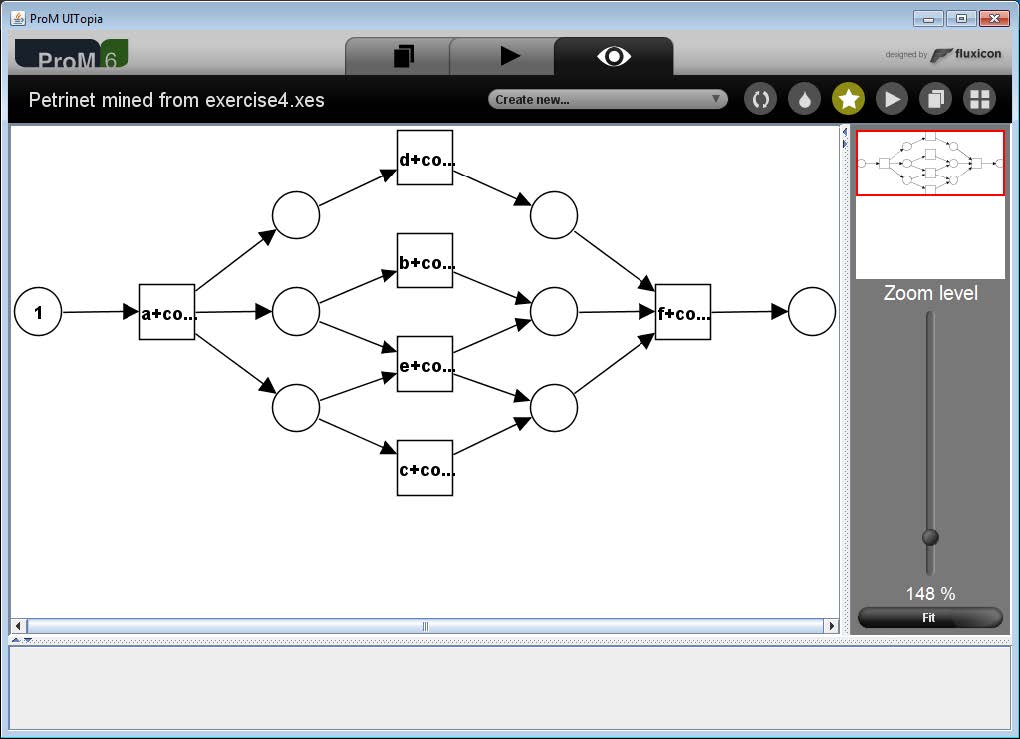
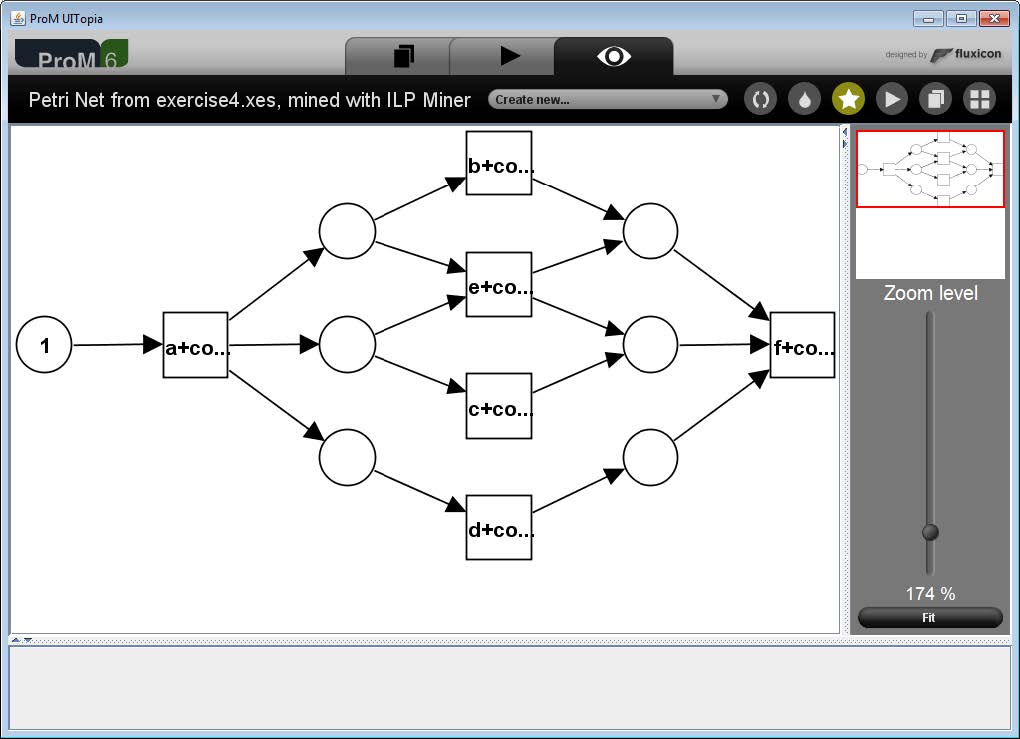
-
- The expected results are shown in the figures below.
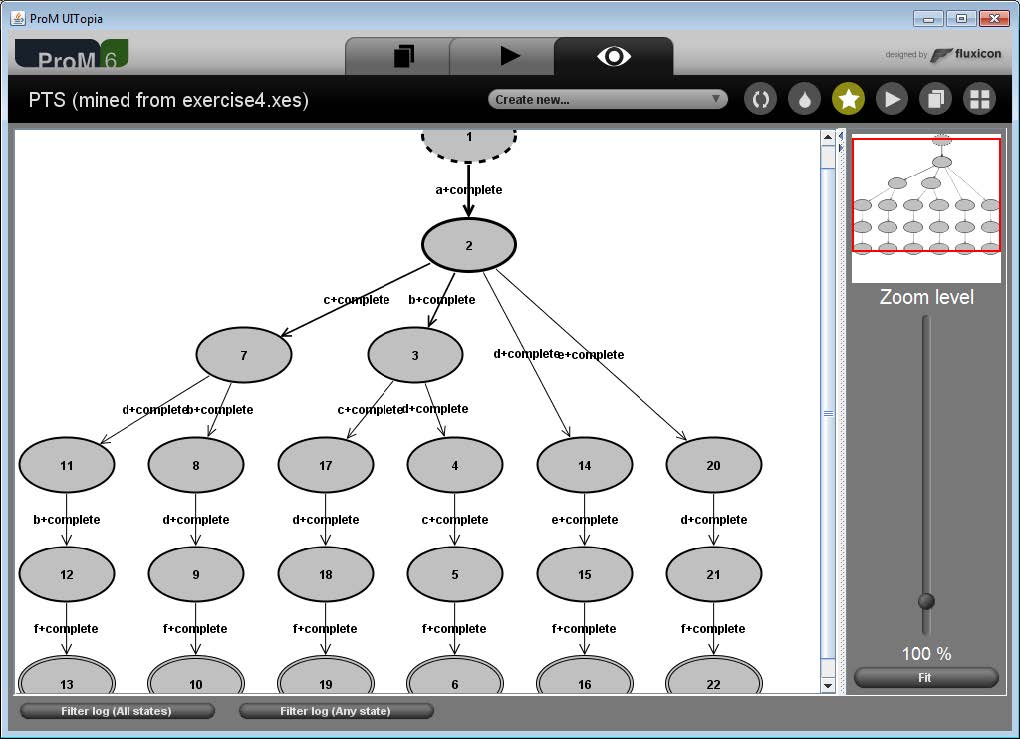
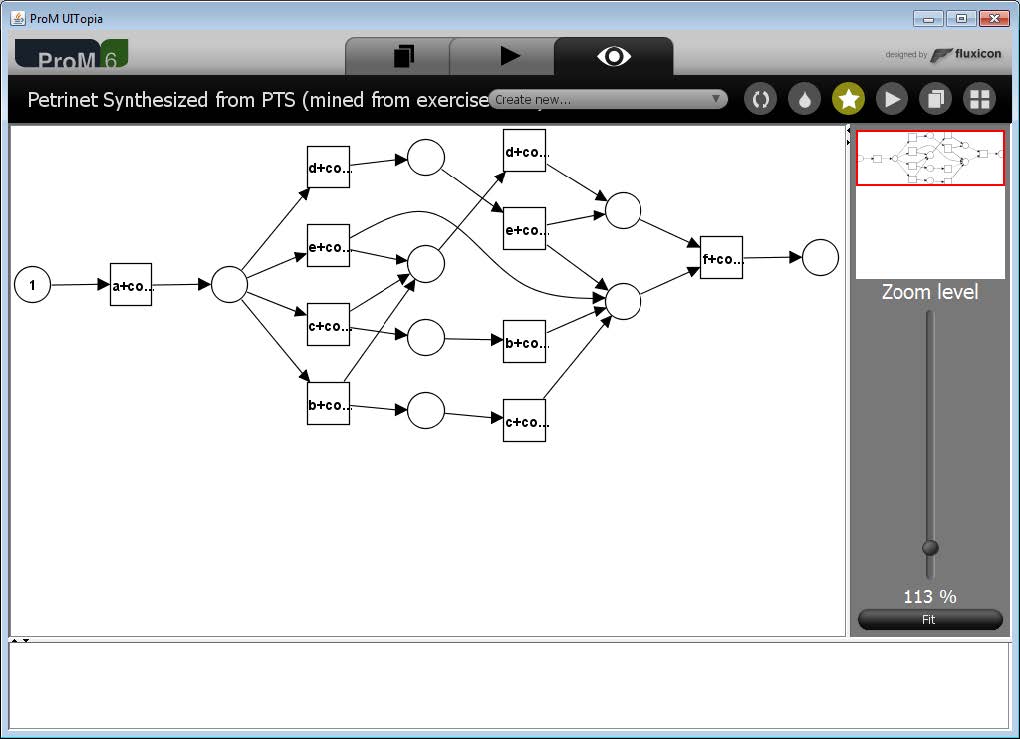
-
- The expected result is shown in the figure below.

-
- The expected result is shown in the figure below.

- The resulting Petri nets of the alpha-algorithm and the ILP Miner are the same. The one converted from the Transition System Miner result is different however. The reason for this is that the alpha-algorithm and the ILP Miner only allow for each event to be present only once. In the transition system events are present multiple times. During the conversion of the transition system to a Petri net not all events are merged, therefore the resulting Petri net looks different but describes exactly the same behavior.
- The result of the Heuristics Miner, as shown in the figure below, is not a Petri net. The net only indicates direct relationships without specifying the split and join semantics.
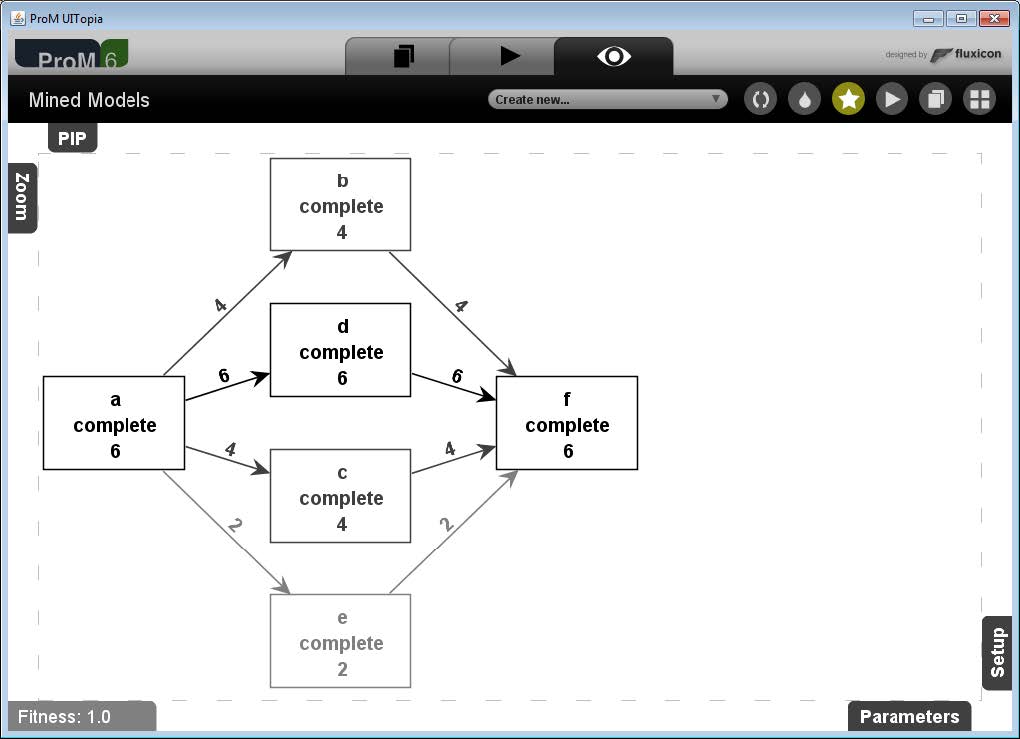
-
- To visualize the Heuristics net from the previous action with the split and join semantics we need to select the visualization option as shown in the tope figure below. The resulting net then shows the split and join semantics, as shown in the bottom figure below. The resulting net is essentially the same as the Petri nets that resulted from the alpha-algorithm and the ILP Miner.
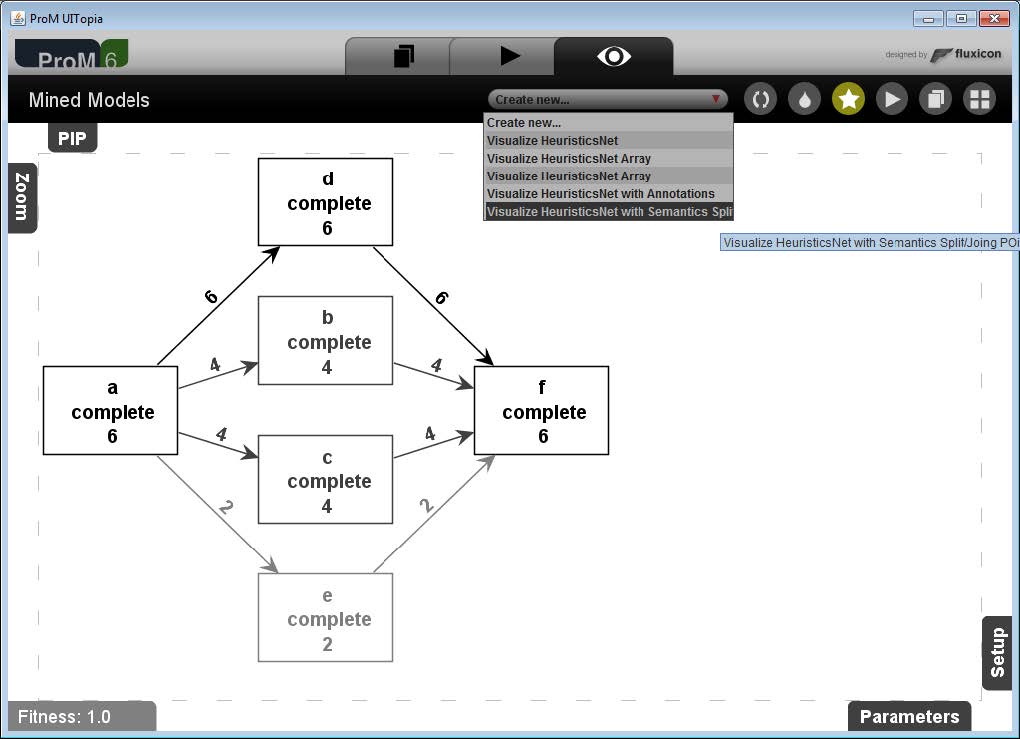
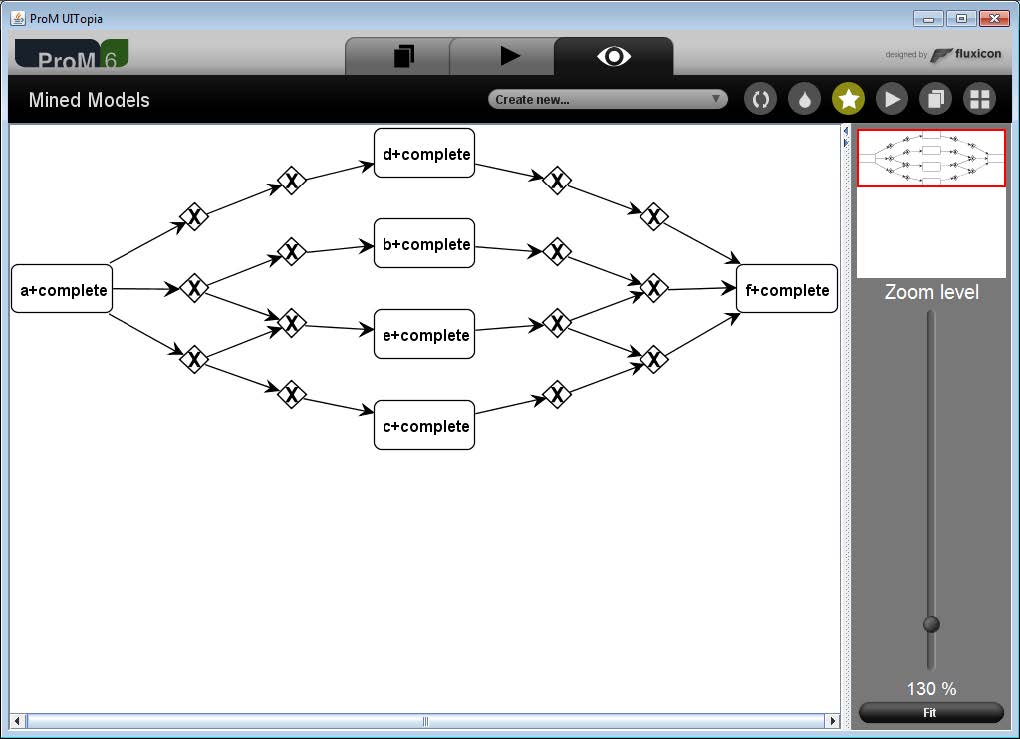
- In the top figure below the result with the default settings for the Genetic Miner is shown. We increased the number of iterations from 2 to 200 to get a model with a fitness of 0.875. In the bottom figure below the resulting model is shown.

